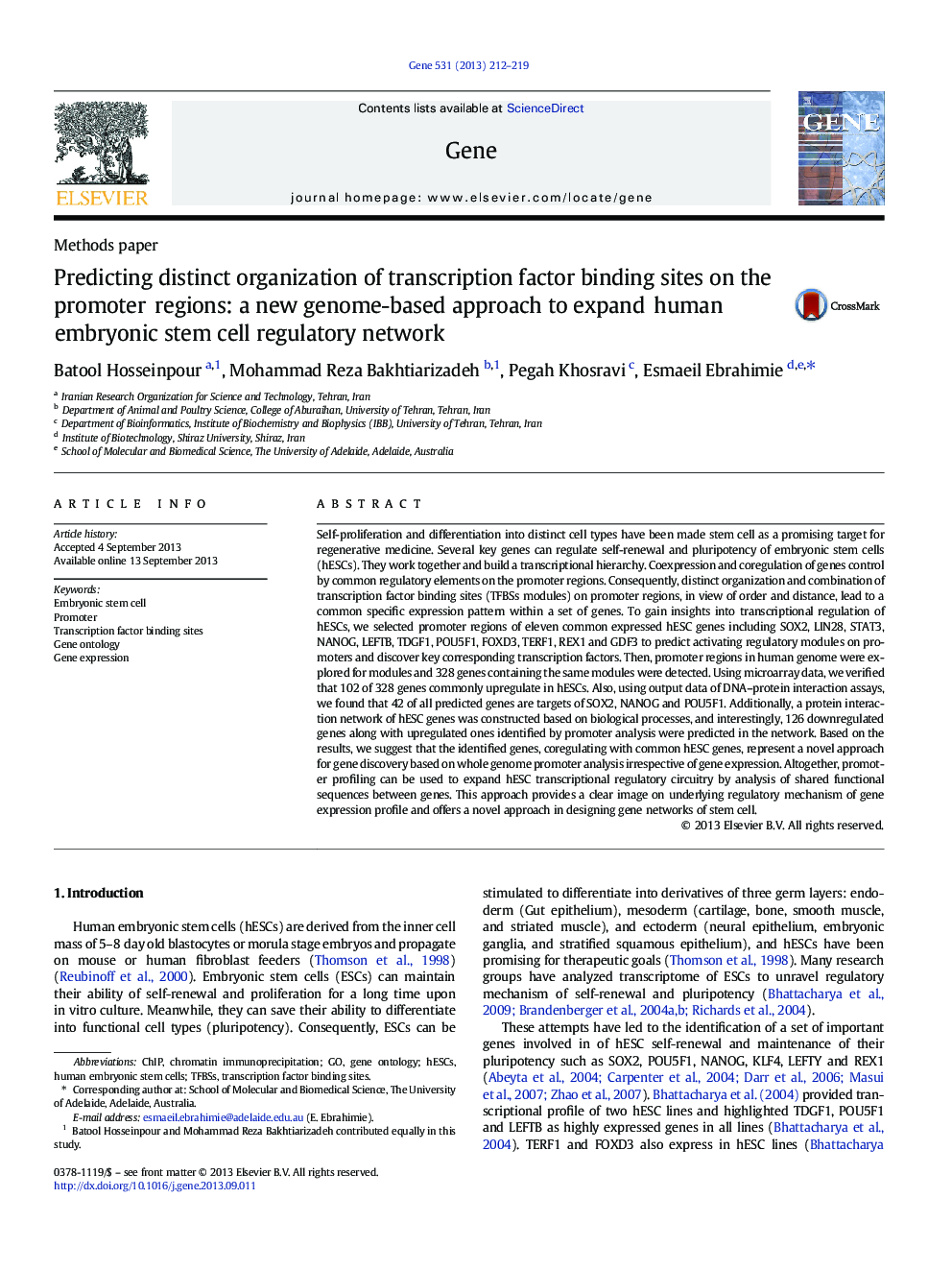| کد مقاله | کد نشریه | سال انتشار | مقاله انگلیسی | نسخه تمام متن |
|---|---|---|---|---|
| 2816846 | 1159955 | 2013 | 8 صفحه PDF | دانلود رایگان |

• Gene discovery in embryonic stem cell by whole genome promoter analysis
• Role of non-coding upstream sequences joining to coding-sequences in gene selection
• Suggesting new candidates for stem cell self-renewal regulation via promoter mining
• Unraveling self-renewal transcriptional regulatory circuits in embryonic stem cell
Self-proliferation and differentiation into distinct cell types have been made stem cell as a promising target for regenerative medicine. Several key genes can regulate self-renewal and pluripotency of embryonic stem cells (hESCs). They work together and build a transcriptional hierarchy. Coexpression and coregulation of genes control by common regulatory elements on the promoter regions. Consequently, distinct organization and combination of transcription factor binding sites (TFBSs modules) on promoter regions, in view of order and distance, lead to a common specific expression pattern within a set of genes. To gain insights into transcriptional regulation of hESCs, we selected promoter regions of eleven common expressed hESC genes including SOX2, LIN28, STAT3, NANOG, LEFTB, TDGF1, POU5F1, FOXD3, TERF1, REX1 and GDF3 to predict activating regulatory modules on promoters and discover key corresponding transcription factors. Then, promoter regions in human genome were explored for modules and 328 genes containing the same modules were detected. Using microarray data, we verified that 102 of 328 genes commonly upregulate in hESCs. Also, using output data of DNA–protein interaction assays, we found that 42 of all predicted genes are targets of SOX2, NANOG and POU5F1. Additionally, a protein interaction network of hESC genes was constructed based on biological processes, and interestingly, 126 downregulated genes along with upregulated ones identified by promoter analysis were predicted in the network. Based on the results, we suggest that the identified genes, coregulating with common hESC genes, represent a novel approach for gene discovery based on whole genome promoter analysis irrespective of gene expression. Altogether, promoter profiling can be used to expand hESC transcriptional regulatory circuitry by analysis of shared functional sequences between genes. This approach provides a clear image on underlying regulatory mechanism of gene expression profile and offers a novel approach in designing gene networks of stem cell.
Journal: Gene - Volume 531, Issue 2, 1 December 2013, Pages 212–219